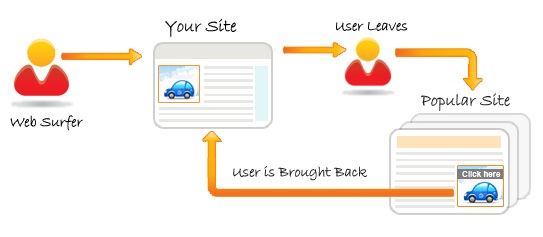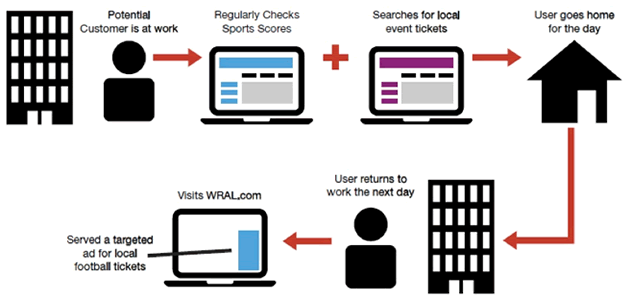
by retargeting | Apr 26, 2016 | Retargeting tool
With a lot of big dogs in the saturated travels and tours stratosphere, it is becoming increasingly high for small and medium travel agencies to spread their wings and compete favorably with the established and well known travel agencies. Without their might and money, it becomes imperative for these small and medium travel agencies to pursue smart ways to get noticed and make sales. In this light, it is imperative for them to utilize the amazing marketing powers of retargeting to seek and capture visitors who once visit their websites, but left without making bookings. With the travel industry being controlled by personalized preferences of customers, it is necessary for travel agencies to pursue strategies that cater for the specialized and personalized needs of their clients. With retargeting or what is sometimes referred to as remarketing, small and medium travel agencies can easily push relevant and personalized offers to the visitors that have previously visited their website but did not convert. By offering personalized services via retargeting, the customers feel valued and would most often return to the travel agency’s website to complete the transaction they previously abandoned and make their desired bookings. For a successful retargeting, it is important for small and medium travel agencies to search for a focused and experienced retargeting partner who will ensure that their website succinctly convert bookings of low value into bookings of high value. At Retargeting.Biz , we offer you the chance to target and seek out different people who are seeking airfares to specific locations by suggesting adequate hotel bookings and other vacation packages. Apart from this, we provide “smart ads”...

by retargeting | Apr 20, 2016 | E-commerce trends
Back in 2008, I was just starting to access the Internet using a phone. Of course, it was a regular, Nokia, feature phone, but just the idea of being able to access the World Wide Web using such a small device was really fascinating. Nowadays, we’re leaving in a permanently connected world, with the Internet being available to everybody and, surprisingly or not, it’s being accessed from mobile devices more and more often. Google said that there are already more searches being made from mobile devices than from PCs and this can have a big impact on websites, especially when it comes to ecommerce. For example, 57 percent of the traffic during this year’s Black Friday season came from smartphones or tablets, while Walmart’s sales from mobile devices almost doubled from 2014 to 2015. Considering this, it’s not surprising to hear a lot of people saying that desktop ecommerce will soon become history, with mobile taking over. Well, we don’t agree with such statements and we will tell you why in a jiffy! First of all, even though traffic from mobile devices is growing blazing fast, it doesn’t always lead to actual sales. Yes, people are opening emails from their phones and even click on those links they’re containing, but in terms of conversions, mobile is way, but waaaay behind desktop. Oh, and the growth rate is very slow, at least for the moment. Secondly, let’s not forget about the checkout process. Heck, there are a lot of people having trouble with this step even on desktop, not just on mobile. When shopping from a smartphone or a tablet,...

by retargeting | Apr 19, 2016 | E-commerce trends
If you like to call yourself a true marketer you should be aware about the continuously growing importance of mobile, the platform of the moment when it comes to digital advertising. Delivering a message on desktop can be hard sometimes, considering that it implies audience targeting, engagement and finally transmitting something, but when the screen gets smaller, things might complicate a bit. But there’s no need to panic, as we have a hint for you. We can call mobile displays as the most personal screens, so there’s no doubt that they’re an untapped opportunity for marketers. By exploiting this intimacy and adding a bit of creativity, you can engage with customers and build brand engagement! The whole secret behind this is appealing to users’ emotions. If you want your message to be received properly, you need to trigger these emotions, which, again, might sound complicated. Unlike live and email triggers offered by Retargeting.biz, emotional triggers are experiences that draw a person back into the past, causing feeling and behaviors to arise. And, believe it or not, you can use these experiences in order to create a memorable user experience on mobile. Here are a few tips on how to do it… Understand emotional triggers …because without this, all your strategy would be in vain. Love, anger, curiosity, fear, trust and guilt are some of the most powerful ones and you should use them wisely. Also, the most powerful the emotion you’re targeting, the more likely it will move someone. Still, you should be aware that triggering these emotions shouldn’t be done too strongly. Be subtle We wanted to mention...

by retargeting | Apr 18, 2016 | Retargeting tool
Don’t you just hate all those intrusive messages you receive every day? Yeah, thought so. Fortunately, marketers become more and more aware about the importance of retargeting and they’ve even started acquiring experience. Experts estimate that less than 2% of web traffic makes a purchase, complete a sign up or a form. It’s a shame to leave that 98% unexploited, right? Well, this is where retargeting comes in. And if these numbers aren’t enough to convince you about its ‘power’, let’s break it down in a few point. To be more specific, today we’re talking about the benefits of retargeting. Precise targeting What makes retargeting so great is that it helps you to avoid situations in which you’re shooting with ads all over the Web, on website potential clients never visit. Instead, you are displaying ads solely to people who have already expressed their interest in your business. Increases your marketing reach Let’s say that you’re already using an advertising system, like AdWords or Facebook Ads. You already have a specific reach, but what if we told you that you can expand it? You guessed it, with retargeting. You can have your ads shown on even more websites, making your brand and your site even more popular. And you know what’s even better? You can advertise on top, premium websites, at some excellent rates! Better engagement One of the main aspects that affects a site is the time spend by visitors on it. Retargeting allows you to reconnect with people in a meaningful way. But some numbers work better than a promise, right? Well, you can get back in...

by retargeting | Apr 15, 2016 | E-commerce trends
Those times in which marketers were sending the same messages to everybody seem to be history – at least this is what we like to believe – more and more of them being interested in behavioral marketing. The latter is a technique used by publishers and advertisers to increase the effectiveness of their campaigns, using the information collected on users’ individual browsing behavior. Or you can simply call it segmentation based on customer behaviors. Since it’s being used alongside other forms of targeting based on factors like demographics, geography and contextual web page content, a lot of marketers refer to this process as “audience targeting”, but we’ll stick to behavioral targeting for the moment. Ok, but the big question is…how does this thing work? How can behavioral targeting help a site? Well, it’s pretty simple, actually. When somebody visits your website, a cookie is placed into his or her computer. And this little cookie gathers information about the visit, helping the website owner to put the visitor into a specific group or create a profile that links to the visitor’s web browser. From that point, your website will show that users only relevant information. We know, it sounds a bit creepy to hear that somebody, in some way or another, is collecting information about what you’re doing on the Internet, but there’s no need to worry. Here are the main types of behaviors marketers are interested in… IP Address & Geolocation – This is one of the most basic types of segmentations. It’s essential for targeting audience by where they live, in order to show discounts or offers targeted...






